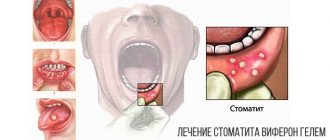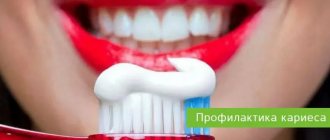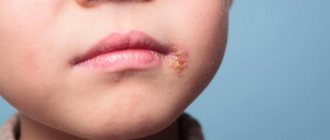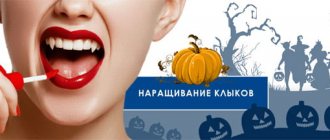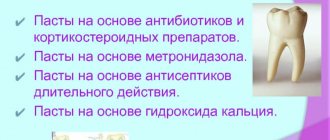Children more often than other patients suffer from infectious pathologies. This is due to the fact that their immune system has not yet been formed. The therapeutic regimen includes universal medications. The most popular are Viferon and Viburkol. These drugs belong to different pharmacological groups.
Viferon is an immunomodulatory drug characterized by antiviral and antiproliferative properties. Viferon is based on human recombinant interferon alpha-2b. This component prevents the replication of the pathogenic virus and accelerates the regeneration of damaged cells. The medication is characterized by the absence of age restrictions. It is allowed to be given even to newborns and infants. This is due to the relative safety of this drug.
Viburkol is an effective medicine of natural origin. It has a positive effect on the patient's body. The drug consists of plant extracts.
It is used for nasal congestion, ARVI, teething, hyperthermia. The safety profile of Viburkol has been fully studied. The medication has immunostimulating, antitumor, antiviral and antiherpetic effects.
Indications for use
Viburkol is used to cleanse the body of toxic substances and stimulate active immunity. These suppositories, like Viferon, are characterized by analgesic properties.
These medications help improve the functioning of the central nervous system. Viburkol is used as an antipyretic for infectious pathologies. The drug quickly eliminates:
- catarrhal phenomena;
- cramps in the stomach;
- sleep problems;
- unreasonable anxiety;
- fever;
- intestinal colic.
Viburkol is often included in the therapeutic regimen for influenza, mumps and chickenpox.
Viferon is prescribed if the child has a history of the following diseases:
- Acute viral infections.
- Infectious and inflammatory pathologies of the excretory system.
- Meningitis, intrauterine infection, blood poisoning.
Can Viferon be used by children?
Viferon suppositories can be used by children of different ages. Doses of medication for infection in newborns and premature infants:
- Prematures with a gestational age of more than 34 weeks, 150,000 IU twice a day. The interval between doses is 12 hours. The duration of course therapy is 5 days.
- Premature babies less than 34 weeks - 150,000 IU three times a day (every 8 hours) for 5 days.
Children under 7 years of age with ARVI are also advised to take Viferon 150,000 IU twice a day. Course therapy lasts up to 5 days. If treatment is ineffective, you should see a pediatrician.
The number of courses of treatment may vary depending on the type of disease:
- flu - 1-2,
- cytomegalovirus infection - 2-3,
- enterovirus infection - 2-3,
- pneumonia (as a complication after a viral infection) - 1-2,
- herpes - 2.
The number of courses is determined by the doctor. The interval between them is 5-6 days.
According to research, with coronavirus, children under 7 years of age can be prescribed up to 1,000,000 IU 2 times a day. And for children over 8 years old, up to 3,000,000 IU twice a day. The duration of therapy is 7-14 days, depending on the severity of the pathology. Treatment with high doses allows you to quickly remove the pathogen from the body.
For viral hepatitis B, C, D, it is recommended to prescribe Viferon suppositories:
- Under 6 months of age: 3,000,000-5,000,000 IU per day;
- Up to 12 months of age: 5,000,000 IU per day;
- 1-7 years: 3,000,000 per 1 square meter of body surface area per day;
- Over 7 years of age - 5,000,000 IU per 1 square meter of body surface area per day.
In the first 1.5 weeks of therapy, the medicine is taken twice a day. Next, candles are placed every other day for six months to a year.
Contraindications
Viburcol is strictly prohibited for use if you are hypersensitive to the ingredients of the medicinal composition. During pregnancy, the drug is not recommended for use without doctor's prescription. The same goes for women who are breastfeeding. Viburkol is allowed to be taken together with other antiviral medications. The risk of negative consequences is minimal.
In this respect, Viferon differs significantly from Viburkol. It can provoke the development of negative clinical manifestations. The medication should be avoided by patients suffering from the following pathologies:
- hypersensitivity;
- chronic hepatitis;
- cardiovascular diseases;
- disruptions in the functioning of the nervous system;
- partial dysfunction of the kidneys and liver;
- epilepsy.
Taking Viferon is contraindicated for minors, pregnant women, and nursing mothers. The drug should not be included in the drug regimen together with immunosuppressants.
Candles for teething in children.
Today, there are a huge number of medications on the drug market that are assistants to the child and parents during the teething period of the baby. This is a time of crying, fever, pain, sleepless nights, and in some cases, diarrhea. If, after visiting the doctor, he did not determine the presence of the disease in the baby, it means that his first tooth will soon appear. When teething, the baby experiences increased salivation and swelling of the gums. All this is accompanied by the child’s attempts to put his hand in his mouth, he touches his cheeks and ears. At the same time, it is almost impossible to put him to sleep. Doctors often advise not to lower the temperature in order to independently cope with an infection that has entered the body through wounds on the gums. However, lowering the temperature will undoubtedly help the baby sleep and relax.
In pharmacies you can buy ointments, syrups and drops that include herbal ingredients that soothe the child’s gums. But the most common are rectal suppositories.
The main advantages of suppositories over other types of medicines:
- complete absorption of substances by the body, and the chance that some dose of the medicine will flow out is reduced to zero;
- rapid absorption into the intestines provides quick results - the baby will feel better within a couple of minutes;
- the load on the stomach and intestines is minimal;
- do not cause an allergic reaction to additional components, since, unlike syrups, it does not contain fruit flavoring additives;
Rectal suppositories have a liquid base, making insertion into the anus easy. To do this, you need to put the child on his side or back and raise his legs. After administration, you should lightly squeeze your buttocks together to prevent the medicine from falling out.
However, candles also have their minor disadvantages, for example:
- the baby may experience discomfort when inserting suppositories inside;
- If the drug is used incorrectly, you can injure your child;
- in some cases there is a risk of allergies in the form of intestinal irritation, or rather its mucous membrane;
You should use rectal suppositories only in cases where you are sure that the baby is really bothered by teething. And only when he has a high fever for a long time and pain prevents him from falling asleep.
As a rule, suppositories are prescribed to infants, and suspensions are prescribed to older children.
Before inserting the suppositories, the person doing this should wash their hands thoroughly. It is best to use antibacterial or laundry soap. This is necessary to avoid infection in the rectum. Also, before use, you must remove the packaging and thoroughly warm the candle in your hands. Be sure to lubricate the child's anus with baby cream. After administering the drug, do not allow the baby to get up for some time so that it is better absorbed by the body.
Each child receives an individual approach when taking medications. All children develop differently. For example, for children who are two months old and whose teething is accompanied by severe pain, 1/4 suppository is recommended at six o'clock once a day. And if the child is from three months to six months, then the dose changes - two suppositories are prescribed during the day. Children from six months to three years are prescribed 1 suppository per day, but it must be divided into two times. If the child’s condition is considered critical, you need to light a candle every twenty-five minutes for two hours. After this, take a twelve-hour break.
During the teething of baby teeth in children, doctors often prescribe antipyretics with an analgesic effect. For especially small babies, it is best to purchase these medicines in the form of suppositories.
Under no circumstances should you prescribe medications for your child on your own. When choosing it, you should definitely consult with a professional.
The main differences between the drugs
Medicines are characterized by a similar spectrum of action. The difference between Viburkol and Viferon lies in the composition, list of side effects and release forms. Viburkol is sold only in the form of rectal suppositories, while Viferon can be purchased in several varieties. The choice is made based on the nature of the pathological changes.
Suppositories are available in white, may have a yellowish tint and have a torpid shape. The diameter of the candle does not exceed 10 mm. The ointment is most often used topically. It is characterized by a homogeneous structure and a rather specific aroma. Viferon gel has a uniform and opaque concentration, as well as a grayish tint.
Viburkol is classified as a complex type of homeopathic medicine, and Viferon is classified as an immunomodulatory medicine of synthetic origin. Such drugs reduce the load on the liver. Viburkol gradually reduces body temperature without affecting the process of interferon activation, thanks to its antispasmodic and sedative properties.
Use during pregnancy and breastfeeding
Ointment: since when applied externally and locally, the systemic absorption of interferon is low and the drug has an effect only in the lesion, it is possible to use the drug VIFERON® during pregnancy and lactation.
Gel: since the systemic absorption of interferon when applied topically is low and the drug has an effect only in the lesion, it is possible to use the drug VIFERON® during pregnancy and breastfeeding. During lactation, do not use the drug on the area of the nipples and areola.
Suppositories: the drug is approved for use from the 14th week of pregnancy. There are no restrictions for use during lactation.
Which drug to choose
The medication is chosen taking into account the diagnosis, stage and individual characteristics of the patient. The selection of the drug should be carried out by the attending physician. Interferon alpha-2b, which is part of Viferon, is obtained by hybridizing the genome of white blood cells and bacterial plasmids. Protein compounds are characterized by high solubility.
The reasons for using Viburkol are:
- complex treatment of ARVI;
- nervous overexcitation;
- uncomplicated infections;
- inflammatory process in the ENT organs;
- pathologies of the excretory or reproductive systems.
If side effects occur, you should immediately consult a doctor.
He will reduce the daily dose of the medication or replace it with an analogue. The procedure depends on the intensity of clinical manifestations.
"Cefekon" suppositories for teething
"Cefekon" is an antipyretic suppository that has analgesic properties. They help relieve fever and pain. Applicable in the treatment of various symptoms. In trade they have the name “Cefekon-D”. Aimed at treating children, mostly newborns. The main advantage of the medicine is that it does not affect the balance of water and salt in the human body, and taking it does not lead to dehydration during fever. Another advantage of these suppositories is that they are eliminated from the body very quickly. The composition of the drug components is safe for children.
"Cefekon" is produced in the form of white and yellow torpedo-shaped candles. Available in 50, 100 and 250 mg.
The main component of "Cefekon" is paracetamol. It is an active substance. It is able to relieve pain and eliminate high fever as it has an anti-inflammatory effect. Another component is vitepsol; it acts as a base when creating these candles. Since the composition of the medicine is quite uniform, it is very effective and not dangerous for the child’s body.
The effect of the drug begins 25-30 minutes after its use.
Before using the medicine, you should carefully study the instructions. The main condition for use is an enema given to the child during the procedure. For an enema, a chamomile solution or plain warm water is usually used. Next, you need to get rid of the packaging and warm up the candle in your hands.
Age Weight Dosage
1-3 months 4-6 kg. 1 suppository (pack of 50 mg.)
3-12 months 7-10 kg. 1 suppository (pack of 100 mg.)
12 months - 3 g. 11-16 kg. 1 suppository (pack of 200 mg.) or 2 suppositories (pack of 100 mg.)
3-10 years 17-30 kg. 1 suppository (pack of 250 mg.)
10-12 years old 31-36 kg. 2 suppositories (pack of 250 mg.)
A newborn up to three months should be administered 1 suppository at a minimum dose of 50 mg. After taking the drug, it is important to monitor the child’s well-being, as there is a risk of intestinal mucosal allergies. It is very important to store the medicine correctly. Storage for no more than two years at a temperature not lower than twenty degrees. Candles are quite common and purchasing them does not cause problems for buyers. The price for "Cefekon" varies from 50 to 100 rubles. Available in almost every pharmacy.
The main analogue of Cefekon is Paracetomol, Paracetomol-Alpharm and Children's Panadol.
"Cefekon" is a medicine that should be in every family with small children. After all, it has a gentle effect and has almost no contraindications.
Active Ingredients
Viburkol is a homeopathic remedy. It contains extracts of the following plants:
- pharmaceutical chamomile;
- meadow lumbago;
- belladonna;
- plantain;
- nightshade.
Healing extracts are combined with solid fat and calcium carbonate. All of these components are characterized by relative safety.
Viferon contains recombinant alpha-2b. This component is the main one, it is supplemented with auxiliary ingredients. Suppositories include fat, cocoa butter, ascorbic acid, polysorbate 80, sodium ascorbate.
The external gel also contains alpha-tocopherol acetate. In addition to this, the following is added to the drug:
- purified water;
- ethanol;
- benzoic acid;
- citric acid monohydrate;
- distilled glycerin;
- sodium tetraborate decahydrate;
- sodium chloride.
The main ingredient is characterized by a wide spectrum of action and the ability to suppress the replication of DNA and RNA viruses. Thanks to interferon, it increases the cytotoxicity of white blood cells and activates antibacterial protection.
Alpha-tocopherol acetate and vitamin C have antioxidant, restorative, membrane-stabilizing and anti-inflammatory effects. Cocoa butter, which together with confectionery fat provides structure, contains phospholipids and polyunsaturated fatty acids.
Antipyretic and VIFERON - faithful assistants to the doctor and patient
Quite often, fever accompanies acute respiratory viral infections. According to many, to combat ARVI, taking a medicine that lowers the temperature is enough. And after this, you can not miss work the next day, and the child will go to kindergarten or school, because in most cases the main unpleasant symptom in the form of fever can be eliminated by taking several antipyretic tablets. Not everyone knows that when fighting colds and flu, lowering body temperature alone is not enough; antiviral therapy is also necessary.
Stopping the division and multiplication of the virus, as well as increasing immunity, allows the use of antiviral rather than antipyretic drugs. One of these drugs is the broad-spectrum complex antiviral immunomodulatory drug VIFERON for children and adults. It has a double effect - it helps block the virus and restore immunity. The original formula of the drug is a combination of interferon alpha-2b and highly active antioxidants (vitamins C and E). The drug is available in the form of suppositories, ointments and gels. It belongs to the group of cytokines and has a universal effect against a wide range of viruses and other pathogens.
VIFERON helps fight infection at any stage of the disease. The drug provides a powerful antiviral effect and allows you to shorten the overall duration of the disease, quickly cope with the manifestations of infection (runny nose, cough, weakness, fever, etc.), and also reduces the likelihood of developing complications and subsequent diseases. 1
If necessary, you can take VIFERON and an antipyretic (antipyretic) together.
Principles of application
Viburkol is a homeopathic medicine and is quite popular among the population. They do not cause dependence, withdrawal symptoms or addiction. Suppositories normalize the functioning of the digestive system, eliminate spasms and problems with gas formation. The course of treatment can last for 10 days, including when treating newborns. It is recommended to take the suppositories at night, this will enhance the positive effects. The drug can be used to relieve unpleasant symptoms after immunization. The dosage and order of administration are determined by the doctor. It is strictly prohibited to prescribe a therapeutic regimen on your own.
Viferon ointment is approved for use to eliminate herpetic lesions and catarrhal symptoms in children over 1 year old. The gel is prescribed for preventive and therapeutic purposes. Suppositories are used as an aid in the treatment of infectious pathologies, generalized myeloma, hairy cell leukemia and bladder cancer. Basal cell carcinoma, condylomatosis acuminata, meningeal form of tick-borne encephalitis, and Sézary syndrome are added to this list. The therapeutic course is carried out in full accordance with the doctor’s instructions. The treatment regimen is selected taking into account the nature of the clinical manifestations, general well-being and individual characteristics of the patient.
Viferon in the treatment and prevention of acute respiratory viral infections
AND
interferons (IFNs) were discovered in 1957 by English scientists A. Isaacs and S. Lindenmann as proteins that determine the phenomenon of interference, which consists in the body’s immunity to re-infection with the virus.
Over the half-century history of the development of the doctrine of the interferon system, many important issues of its functioning have been revealed, and nonspecific and specific mechanisms of resistance have been studied in detail. Experimental work has shown that the INF system, which arose in vertebrates during the process of phylogenesis, is involved in ensuring the constancy of the internal environment of the body - homeostasis [1]. INFs are active proteins that are produced by all cells of the body, but 99% of all INFs are produced by blood and bone marrow cells.
Interferons are formed under the influence of the antigenic system, but a small amount of them is produced without the participation of antigens. It is known, for example, that the level of INF is increased in patients with rheumatoid arthritis and systemic lupus erythematosus [2, 3].
The medical significance of INF is determined by their antiviral and immunocorrective activity, as well as antitumorigenic and radioprotective effects.
The interaction of IFN with cells begins with the binding of interferon to specific interferon receptors on the surface of cells. It has been established that different cells are sensitive to different types of interferons [4]. IFN-a and -b have a common receptor on the cell surface, while IFN-g has a separate receptor. Once inside the cell, IFN activates genes encoding effector proteins that are responsible for the antiviral effect. The role of IFN in antiviral protection is confirmed by the presence of a strict correlation between the level of production of endogenous IFN and recovery, aggravation of the severity of the disease when the activity of endogenous interferon is suppressed, and, finally, treatment with interferon helps prevent the development of viral infection [5].
IFNs are divided into three main types: a, b and g. a- and b-IFNs have an antiviral effect, inhibiting the processes of transcription and translation, disrupting the synthesis of viral proteins [6].
Evidence has been obtained of a connection between the interferon system and the immune system: interferons are important mediators of immunity
, which allows them to be classified as a family of regulatory cytokines, stimulates phagocytosis, natural killer cell activity, and enhances the expression of histocompatibility antigens of classes 1 and 2 [7].
The antiviral and immunomodulatory activity of IFN was the basis for the use of interferon drugs in medicine. The most effective for most infectious diseases are interferons-a, which are used very widely in clinical practice. First of all, this applies to second-generation INF - recombinant interferons-a2, obtained by genetic engineering (without the use of donor blood). There are several interferon-a2 preparations: 2a, 2b and 2c.
Interferon preparations are quite effective, but the consequence of the biological processes that IFNs cause in the body are adverse reactions. The most common (with large individual variations) is influenza-like syndrome, observed in almost all patients, especially in cases of high doses of INF. Along with flu-like syndrome, long-term courses may cause serious side effects from the cardiovascular system (hypotension, heart rhythm disturbances) and the central nervous system (irritability, aggressiveness or depression). All this limits the use of IFN drugs, and in case of dangerous side effects requires discontinuation.
The search for new forms of drugs to avoid negative phenomena led to the creation of Viferon
– a new antiviral immunomodulatory drug developed at the Research Institute of Epidemiology named after. N.F. Gamaleya RAMS (produced by Feron LLC, Moscow). In Russia, Viferon was registered and approved for use in 1998. The dosage form is rectal suppositories and ointment.
Mechanism of action of Viferon
Viferon is a complex of recombinant interferon-a2b in combination with antioxidant drugs - a-tocopherol acetate and ascorbic acid in therapeutically effective doses.
In a series of experimental works by V.V. Malinovskaya showed that the ability to produce IFN increases significantly with the addition (in vitro) of α-tocopherol acetate and ascorbic acid, which influence the processes of lipid peroxidation of cell membranes, to IFN-inducing cells [7]. The use of the drug combination effectiveness index formula showed that the use of R-IFNa with antioxidants had a synergistic effect on the antiviral effect of R-IFNa, greatly enhancing the antiviral effect of interferon [8].
A detailed study of the mechanism of action of Viferon revealed its immunomodulatory effect on T- and B-lymphocytes, normalization of humoral immunity, and the content of immunoglobulin E [9]. A clear correlation has been established between various factors of specific, nonspecific and antioxidant protection in the treatment of viral and bacterial infections [10].
A study of the pharmacokinetics of the drug showed that rectal administration of Viferon made it possible to achieve higher concentrations and prolonged circulation of R-IFN in the blood than with parenteral administration [11]. A decrease in the level of serum interferon after 12 hours necessitates its repeated administration.
Side effects and tolerability
Side effects of Viferon were not recorded during the drug trial.
It has been established that long-term use of Viferon does not produce antibodies that neutralize the antiviral activity of R-IFN alpha 2b.
Currently, Viferon is the only drug from the class of recombinant interferons registered in Russia, approved by the State Pharmacological Committee of the Ministry of Health of the Russian Federation for the treatment of various infectious diseases not only in adults, but also in children, including newborns, as well as pregnant women.
Clinical and immunological effectiveness of Viferon
Virus-induced immune dysfunction (T-cell suppression, inhibition of phagocytosis, etc.), which develops with influenza and other acute respiratory viral infections, allows us to classify the latter as one of those diseases, the course and outcome of which are determined by the presence of immune drugs in complex treatment.
In our clinic, over the past years, the clinical effectiveness of Viferon in respiratory diseases and their bacterial complications has been studied. In particular, in an open, placebo-controlled study, we demonstrated high therapeutic efficacy for influenza and other respiratory diseases complicated by sore throat [12]. 54 patients with lacunar tonsillitis and acute respiratory viral disease, confirmed by laboratory methods, were under observation. Reliable evidence has been obtained of the effectiveness of treatment with antibacterial agents in combination with Viferon. The drug was prescribed at a dose of 500 thousand IU twice a day for five days. Treatment was started no later than 48 hours from the appearance of the first signs of the disease. The therapeutic effect was expressed in a reduction in the symptoms of intoxication and the duration of purulent deposits on the tonsils, and a reduction in the duration of the disease in general.
The clinical effect, as a rule, was accompanied by a pronounced improvement in immunological parameters: normalization of initially reduced DM3 and DM4, and a decrease in the number of circulating immune complexes (Table 1). The positive dynamics of circulating immune complexes during treatment with Viferon, from our point of view, is an important criterion indicating the elimination of the pathogen and a reduction in the duration of the disease on the one hand [12].
According to other clinical observations of 137 patients aged 1 to 14 years with severe forms of ARVI, based on clinical follow-up analysis, the authors found that in severe forms of infection, a low initial level of serum IFN and a significant decrease in the total number of T- lymphocytes, decreased activity of phagocytes, which is the basis for prescribing Viferon from 1–2 days of illness to children with severe forms of ARVI.
Follow-up observation of 50 children examined for 3–6 months revealed a protective effect of Viferon against subsequent episodes of ARVI [13]. The authors recommend prescribing the drug to frequently and long-term ill children aged 1–14 years for 5 days, 2 suppositories per day in the following doses: 500,000 IU per suppository for children under 7 years of age, and 1 million IU for children from 7 to 14 years of age , and use it for preventive purposes during periods of high incidence of ARVI and for the adaptation of children in preschool institutions.
Clinical and immunological observations in a group of adults and children who often suffer from viral and bacterial infections of the respiratory tract made it possible to identify disturbances in the interferon system: a decrease in the ability of leukocytes to produce a- and g-interferons. Pronounced changes in the T-cell immune system require the use of adequate doses of Viferon [13,15]. The frequency and duration of course treatment depend on the severity of the disease and the severity of changes in the immune status. As a rule, therapy with Viferon is carried out over several months at an age-specific dosage. Prolonged viferon therapy for 2.5 months made it possible to reduce the incidence of ARVD by approximately 2–5 times per year [13].
Use of Viferon ointment for the treatment and prevention of influenza and other acute respiratory viral infections
Viferon ointment, containing 40 thousand IU of IFN and tocopherol acetate in a therapeutic dose per 1 g, is used at the first signs of the disease intranasally 3-4 times a day for 5 days. For the purpose of prevention in areas of infection, the ointment is applied in a thin layer to the mucous membrane of the nasal passages 2 times a day, morning and evening, throughout the entire dangerous period.
According to the results of the study by E.S. Makarova (2001), conducted in a preschool institution, when studying the interferon status in children from 1 year 7 months to 3 years against the background of the preventive use of Viferon ointment, an increase in the production of g-interferon, a significant decrease in the amount of circulating “early” interferon, and a reduction in morbidity by 4 times, no adverse reactions. The results obtained, according to the authors’ conclusion, indicate the high effectiveness of viferon prophylaxis in frequently ill young children [15].
Thus, convenient dosage forms, high therapeutic and prophylactic effectiveness of Viferon, and the focus of its effect on the immune system make it possible to recommend this drug in the complex treatment and prevention of respiratory infections.
In 2001, work on the creation of new dosage forms of recombinant interferons (including Viferon) and their introduction into clinical practice was awarded a prize from the Government of the Russian Federation.
Among herbal remedies for the prevention of ARVI, preparations such as dry purified extract from the leaves of sea buckthorn of the sucker family are recommended. The drug has antiviral and interferon-inducing activity and is prescribed to adults and children at the first symptoms of a respiratory disease. The most pronounced therapeutic effect is achieved with a combination of dosage forms of general resorptive and local action.
Echinacea purpurea juice, which contains a unique complex of phytocomponents, is effective.
The drug stimulates the body’s production of its own interferon, prevents the development of the disease and alleviates its symptoms; Available in the form of drops, it is recommended to take a course of at least a week. Achieving a lasting effect – after 8 weeks. Literature:
1. Soloviev V.D. Bektemirov T.A. Interferons in the theory and practice of medicine. 2nd ed. – M.1981.
2. Cross JC, Roberts RM Constitutive and trophoblast – specific expression if a class of bovine interferon genes. Proc. Natl. Acad. Sci USA 1991: 88, 3817 – 3824.
3. Dianzani F. The interferon system. Health Sciences Press, 1993
4. Khesin Ya.E., Narovlyansky A.N., Amchenkova A.M. Cellular receptors for interferons. In the book. The interferon system is normal and in pathology. Moscow, 1996: 39 – 52.
5. Dianzani F. Baron S. The interferon's: a biological system with therapeutic potential in viral infections. In Lymphoblastoid Alpha – Interferon Current
Medical Literature Ltd, London, 1995.
6. Ershov F.I. Interferons (to the 40th anniversary of the discovery). Question virus., 1998, No. 6, vol. 43, p. 247 – 252.
7. Himmler A., Hauptmann R. et al. Structure and expression in Escherichia coli of canine interferon alpha gene. J. Interferon Res, 1987: 7, p 173 – 178.
8. Malinovskaya VV “Interferon a2b antivirus action modulation with the help of antioxidant action preparation” International Conference on Interferon's Biology and Clinical Applications. 77, 1998.
9. Tareeva T. G. et al. “The use of Viferon for intrauterine infection of the fetus and newborns” Abstract. Dokl. Russian national congress “Man and Medicine” M., 162, 1995.
10. Keshinyan E.S. and others. “The use of genetically engineered alpha 2-interferon - Viferon in the complex therapy of severe forms of infectious and inflammatory diseases in newborns” Abstract.
report Russian national congress "Man and Medicine", 162, 1995.
11. Babayants A.A. Malinovskaya V.V. Meshkova E.N. “Pharmacokinetics of interferon after rectal administration” Issue. Virus.1:83–84, 1986
12.. Kolobukhina L.V. Gatich R.Z. Merkulova L.N. and others. “Complex treatment of acute respiratory viral infections complicated by tonsillitis” Lech. Doctor, 2003, No. 1, pp. 32–33.
13. Chebotareva T.A. Timina V.P. Malinovskaya V.V. Viferon: use for influenza and other ARVI in children in the book. “Immunomodulatory and antiviral drug Viferon in the treatment of children and adults who often suffer from viral-bacterial infections,” M. 2003.
14. Karaulov A.V. Sokurenko S.I. Barmotin G.V. The principle of immunotherapy and immunorehabilitation of recurrent respiratory diseases. Medical doctor, 2000, No. 1, pp. 44 – 45.
15. Makarova E.S. Doskin V.A. Malinovskaya V.V. and others. The use of Viferon in young children depending on the seasonal rhythms of interferon formation. Abstracts of the report. Ross. scientific Cong. “Man and Medicine” (M), April 2 – 6, 2001, p. 272.
Side effects
If Viburkol is used incorrectly, the clinical picture may include symptoms such as itching, rashes on the skin, and increased body temperature. These signs may be caused by individual intolerance to the drug composition. The risk of unpleasant manifestations is quite small. Despite its relative safety, the drug is not recommended to be taken without consulting a doctor. Viferon can provoke the development of an allergic reaction. Its symptoms disappear 3 days after stopping the use of the medication. It combines well with other medications.
If the patient has contraindications to the use of Viburkol, the doctor may prescribe the following analogues:
- Ibuprofen;
- Calpol;
- Rapidol;
- Cefekon;
- Nurofen;
- Paracetamol.
Viferon is replaced by Interferon, Laferobion, Laferomax, Jenferon and Nazoferon. Each of these medications has its own positive and negative properties, so an analogue must be selected by a doctor.
Ointment "Viferon": instructions for use
The ointment is used only for external use. The instructions are simple - apply to the affected area of the skin or mucous membrane and gently smear with your fingers. The quantity should be small, the number of doses should be 3-4 per day. Therapy lasts 5-7 days; if necessary, the course can be continued, but only after consulting a doctor.
The gel is used for the prevention of acute respiratory viral infections and stenosing laryngitis in childhood. For these purposes, the composition is applied to a tampon and then transferred to the child’s tonsils 2 times a day. The course lasts no more than a week and can be repeated twice a year.
The gel can also be used to prevent ARVI in children during the first 2 years of life. In this case, the composition is also applied to a tampon, and then the mucous membrane of each nasal passage is coated (blow your nose and dry it first). The procedure is repeated up to 3 times a day for a week.
The gel is also used to treat herpes in adult patients. It is best to use it during periods of low flow, when rashes appear quite rarely. The composition is applied only to the affected areas, and the number of doses is from 5 to 7 in one day. Therapy is continued for 3-5 days, after which they take a break and, if necessary, repeat the cycle.
